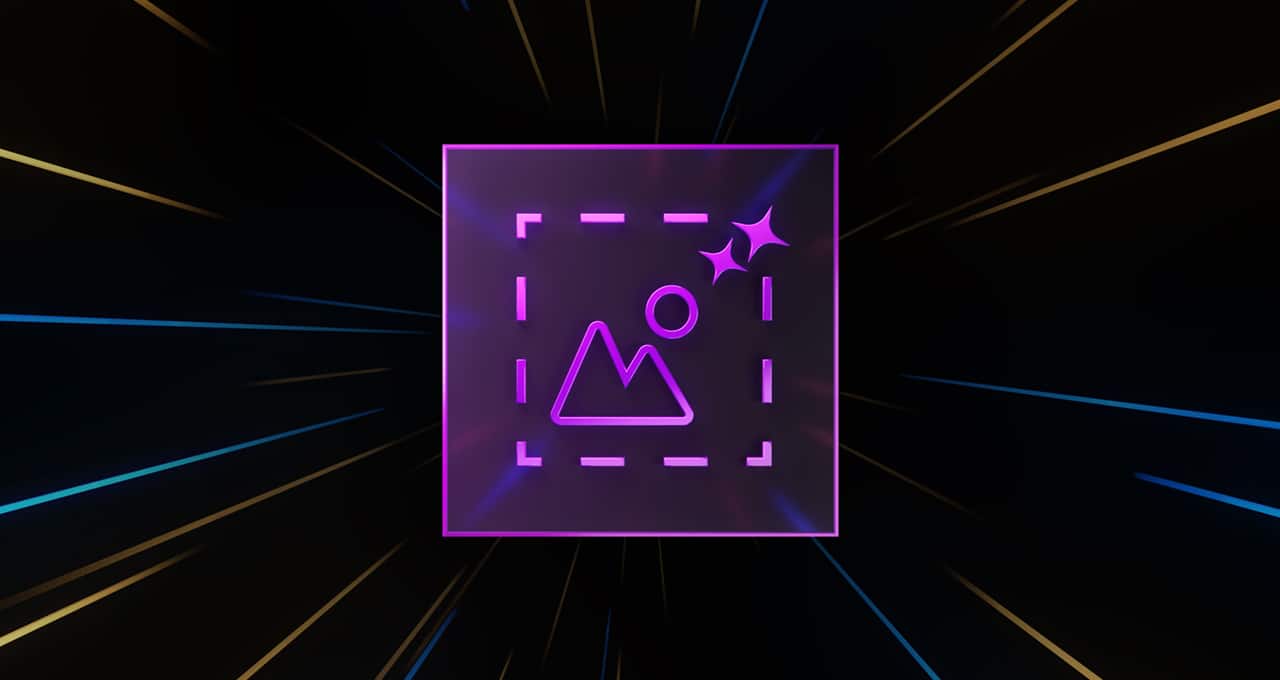Editor’s note: This post is part of the AI Decoded series, which demystifies AI by making the technology more accessible, and showcases new hardware, software, tools and accelerations for RTX PC users.
Adobe Creative Cloud applications, which tap NVIDIA RTX GPUs, are designed to enhance the creativity of users, empowering them to work faster and focus on their craft.
These tools seamlessly integrate into existing creator workflows, enabling greater productivity and delivering power and precision.
Look to the Light
Generative AI creates new data in forms such as images or text by learning from existing data. It effectively visualizes and generates content to match what a user describes and helps open up fresh avenues for creativity.
Adobe Firefly is Adobe’s family of creative generative AI models that offer new ways to ideate and create while assisting creative workflows using generative AI. They’re designed to be safe for commercial use and were trained, using NVIDIA GPUs, on licensed content, like Adobe Stock Images, and public domain content where copyright has expired.
Firefly features are integrated in Adobe’s most popular creative apps.
Adobe Photoshop features the Generative Fill tool, which uses simple description prompts to easily add content from images. With the latest Reference Image feature currently in beta, users can also upload a sample image to get image results closer to their desired output.
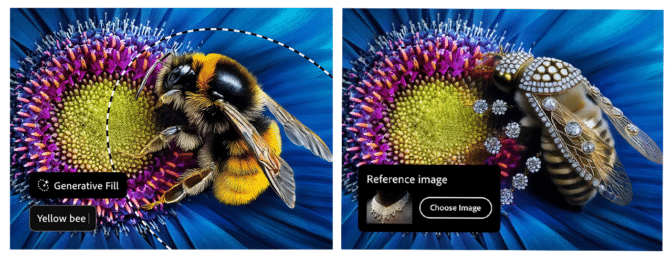
Generative Expand allows artists to extend the border of their image with the Crop tool, filling in bigger canvases with new content that automatically blends in with the existing image.
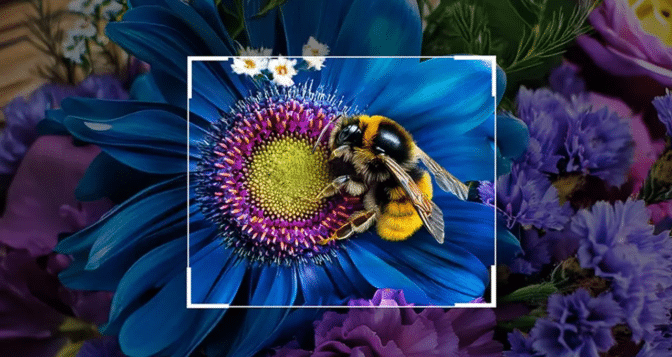
RTX-accelerated Neural Filters, such as Photo Restoration, enable complex adjustments such as colorizing black-and-white photos and performing style transfers using AI. The Smart Portrait filter, which allows non-destructive editing with filters, is based on work from NVIDIA Research.
The brand-new Generative Shape Fill (beta) in Adobe Illustrator, powered by the latest Adobe Firefly Vector Model, allows users to accelerate design workflows by quickly filling shapes with detail and color in their own styles. With Generative Shape Fill, designers can easily match the style and color of their own artwork to create a wide variety of editable and scalable vector graphic options.

Adobe Illustrator’s Generative Recolor feature lets creators type in a text prompt to explore custom color palettes and themes for their vector artwork in seconds.
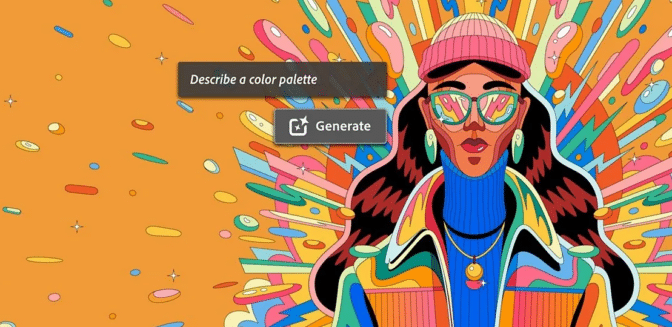
NVIDIA will continue working with Adobe to support advanced generative AI models, with a focus on deep integration into the apps the world’s leading creators use.
Making Moves on Video
Adobe Premiere Pro is one of the most popular and powerful video editing solutions.
Its Enhance Speech tool, accelerated by RTX, uses AI to remove unwanted noise and improve the quality of dialogue clips so they sound professionally recorded. It’s up to 4.5x faster on RTX PCs.
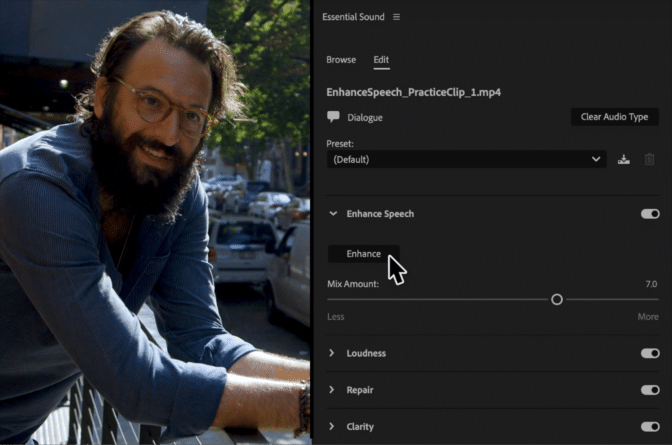
Auto Reframe, another Adobe Premiere feature, uses GPU acceleration to identify and track the most relevant elements in a video, and intelligently reframes video content for different aspect ratios. Scene Edit Detection automatically finds the original edit points in a video, a necessary step before the video editing stage begins.
Visual Effects
Separating a foreground object from a background is a crucial step in many visual effects and compositing workflows.
Adobe After Effects has a new feature that uses a matte to isolate an object, enabling capabilities including background replacement and the selective application of effects to the foreground.
Using the Roto Brush tool, artists can draw strokes on representative areas of the foreground and background elements. After Effects uses that information to create a segmentation boundary between the foreground and background elements, delivering cleaner cutouts with fewer clicks.
Creating 3D Product Shots
The Substance 3D Collection is Adobe’s solution for 3D material authoring, texturing and rendering, enabling users to rapidly create stunningly photorealistic 3D content, including models, materials and lighting.
Visualizing products and designs in the context of a space is compelling, but it can be time-consuming to find the right environment for the objects to live in. Substance 3D Stager’s Generative Background feature, powered by Adobe Firefly, solves this issue by letting artists quickly explore generated backgrounds to composite 3D models.
Once an environment is selected, Stager can automatically match the perspective and lighting to the generated background.
Material Authoring With AI
Adobe Substance 3D Sampler, also part of the Substance 3D Collection, is designed to transform images of surfaces and objects into photorealistic physically based rendering (PBR) materials, 3D models and high-dynamic range environment lights. With the recent introduction of new generative workflows powered by Adobe Firefly, Sampler is making it easier than ever for artists to explore variations when creating materials for everything from product visualization projects to the latest AAA games.
Sampler’s Text-to-Texture feature allows users to generate tiled images from detailed text prompts. These generated images can then be edited and transformed into photorealistic PBR materials using the machine learning-powered Image-to-Material feature or any Sampler filter.
Image-to-Texture similarly enables the creation of tiled textures from reference images, providing an alternate way to prompt and generate variations from existing visual content.
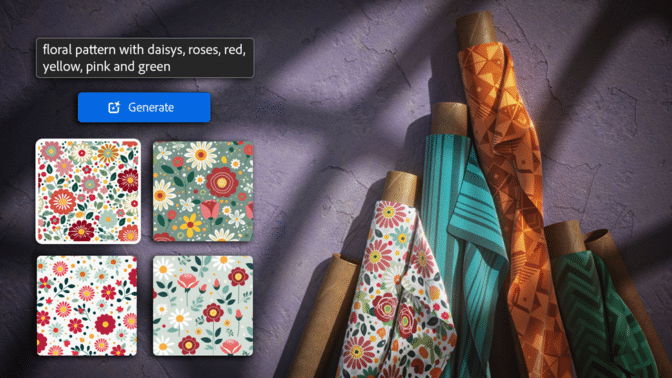
Sampler’s Text-to-Pattern feature uses text prompts to generate tiling patterns, which can be used as base colors or inputs for various filters, such as the Cloth Weave filter for creating original fabric materials.
All of these generative AI features in the Substance 3D Collection, supercharged with RTX GPUs, are designed to help 3D creators ideate and create faster.
Photo-tastic Features
Adobe Lightroom’s AI-powered Raw Details feature produces crisp detail and more accurate renditions of edges, improves color rendering and reduces artifacts, enhancing the image without changing its original resolution. This feature is handy for large displays and prints, where fine details are visible.
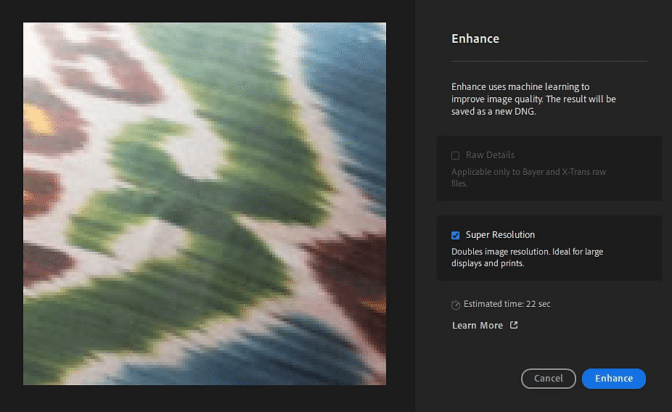
Super Resolution helps create an enhanced image with similar results as Raw Details but with 2x the linear resolution. This means that the enhanced image will have 2x the width and height of the original image — or 4x the total pixel count. This is especially useful for increasing the resolution of cropped imagery.
For faster editing, AI-powered, RTX-accelerated masking tools like Select Subject, which isolates people from an image, and Select Sky, which captures skies, enable users to create complex masks with the click of a button.
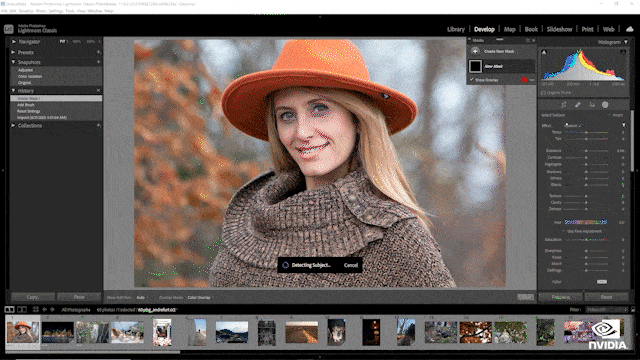
Visit Adobe’s AI features page for a complete list of AI features using RTX.
Looking for more AI-powered content creation apps? Consider NVIDIA Broadcast, which transforms any room into a home studio, free for RTX GPU owners.
Generative AI is transforming gaming, videoconferencing and interactive experiences of all kinds. Make sense of what’s new and what’s next by subscribing to the AI Decoded newsletter.
